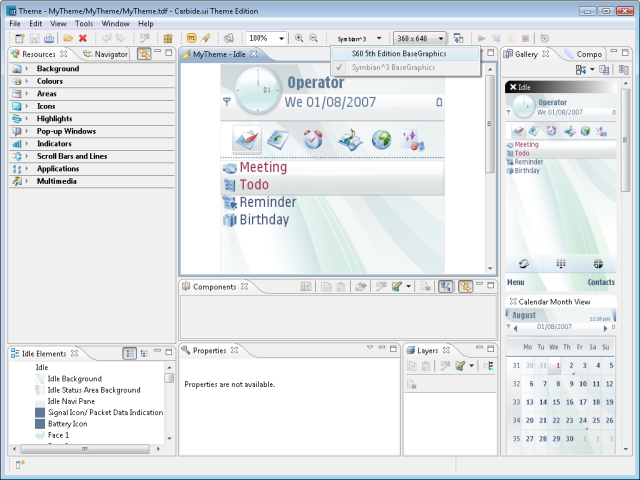There are a number of valid reasons for this decision, and it's not as clear cut as a developer ignoring part of the market.
The first and probably largest issue is money. When you follow the money, when you see who is buying applications and rewarding the developers, the majority of income is coming in from the 5th Edition devices (in Western Europe, at least). What is the breakdown when you have applications available for the two current Symbian platforms (and throw in Series 40 as well)?
The split is, collating info from a number of sources, roughly 90 / 9 / 1.
I.e. 90 percent of the app sales are going to S60 5th Edition devices, primarily the Nokia N97 range, the 5800 and the 5230. Next up, but with a tenfold drop, are the S60 3rd Edition devices, mostly in the Eseries range, with a small balance of Series 40 devices rounding out the numbers.

Where the Developer lives.
This shouldn't be a surprise, as the Eseries and 3rd Edition devices are mostly in the business sphere and only a handful of enterprise apps are needed to fill in some functionality, depending on circumstances. The Ovi Store is not being pushed as heavily on these devices.
It's the most recent phones that people are buying apps and personalisation for, so it's surely right to focus as much development effort there as possible. When third party development is already a bit of a gamble in terms of the return you can make (no matter the platform), spending time on the relatively small sliver of the market that will provide only a tenth of the revenue is a decision that few will make.
In addition, outside of some of the larger gaming houses, third party applications are worked on by boutique software groups and “hero” coders working in one or two man teams. These people are likely to be coding for their own devices, to add in a service that they love and want to have on their smartphone. If they're using the latest phones (and most smartphone geeks are going to be early adopters) they are naturally going to code for those devices. And every decent developer knows that you don't want to release anything until you have tested it on the actual hardware it is designed to run on. If you don't you are asking for trouble.
Those are the practical reasons why less development effort is aimed at the S60 3rd Edition platform. Alongside the developer choice, there is also the nature of modern smartphones and the perception of devices. With a big touchscreen being a feature on many high end (and perceived high end) devices, is the current impression on the High Street that this is a lead into third party applications and an app store economy? It's obviously true for Android and Apple, but I think that it's true for Symbian as well.

Gone, but not forgotten.
Everybody moves on – for example there are very few developers coding for the E90 communicators now, even though I suspect there are tens of thousands of E90's still in day to day use. With very few developers compared to users, once they move on, that's pretty much it for third party apps on a platform. Even though the users might be there, the market is mature – competent applications fill most of the gaps in the market, the developers have moved to new personal devices and there are few titles that can provide a solid return on investment.
That doesn't mean that a platform is dead – S60 3rd Edition is going to be around for a year or two more at least, but it is more like middle age. All the growing is done, whatever apps that are needed have been made, and short of the occasional Indian Summer application that arrives, there won't be any more applications from developers. Bug fixes and updates to keep apps running on later 3rd Edition devices for sure, but there comes a time to accept that you won't see anything new on your smartphone.
3rd Edition is now approaching that moment, and much as we'd like to see it continue to grow, we've probably seen every innovation we're going to see, at least in terms of third party apps.
-- Ewan Spence, July 2010.
